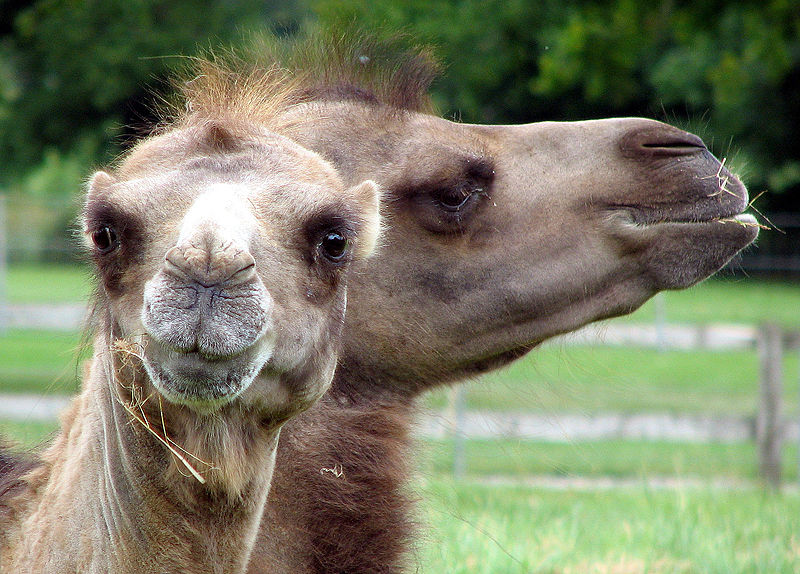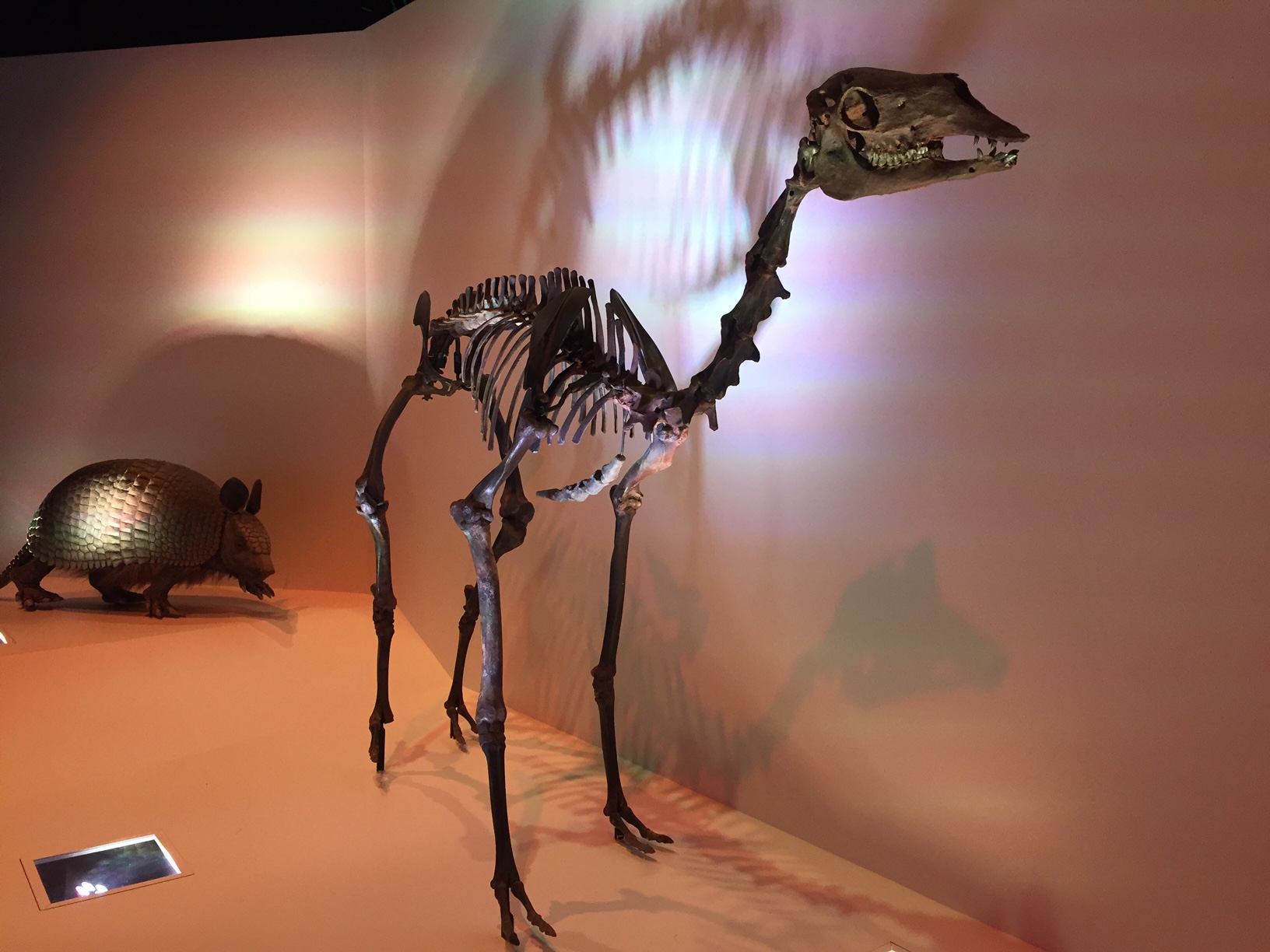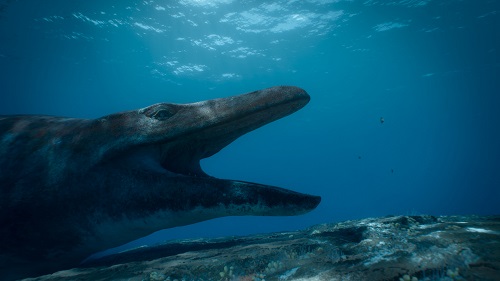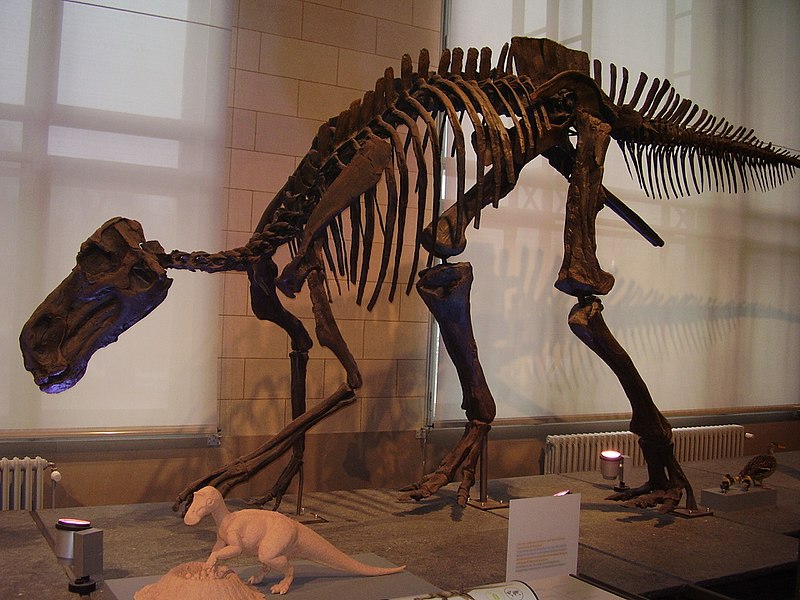Photo courtesy of wikipedea
When you think of a camel, you probably imagine it standing in the middle of a North African or Asian desert. Nowadays camels live in the arid climates of the Middle East and Central Asia, but that wasn’t always the case. Let’s not forget that the closest relatives of Old World camels are the llamas, alpacas and vicunas of South America. How did these camelid cousins end up so far away?
Interestingly, the oldest fossils of camels are found in North America, and it’s not until millions of years after the earliest camel ancestors lived that more modern camels show up in the fossil record in either Old Word or the Southern Hemisphere. So they basically evolved midway between Asia and South America, and then dispersed in opposite directions, some going North through Alaska and some heading South.
Camels are an American invention. Although the earliest camels inhabited grasslands, the adaptations that would later help Dromedary and Bactrian camels survive in Old World deserts were shaped by the evolutionary kick-start of extreme Arctic winters. The branch of the camelid family that moved south evolved along different lines, adapting to the cool, mountainous terrain of South America. If you have never owned an Alpaca wool sweater, I highly recommend trying one out.
As for the populations of early camels that remained in North America, they became extinct around ten thousand years ago, either due to climate change or human predation. Their bones can be found all over North America, even here in Texas. Don’t believe me? You can go see for yourself! There are actually places in Texas where you can go look for the fossils of camels and other ancient creatures. Although I must admit, it’s quite a bit harder than finding sea shells or sharks teeth.
As a side note, you may have heard about wild camels living in West Texas. The U.S. army experimented with using camels to supply remote Western outposts in the 1850’s, and after the Civil War many of these animals were released into the wild. For decades camels would pop up throughout the West, and stories of the “Red Ghost” would make the papers. But these were imported Dromederies, far removed from the early camelids that raomed the West thousands of years ago.
Camelops skeleton for our Hall of Paleontology









